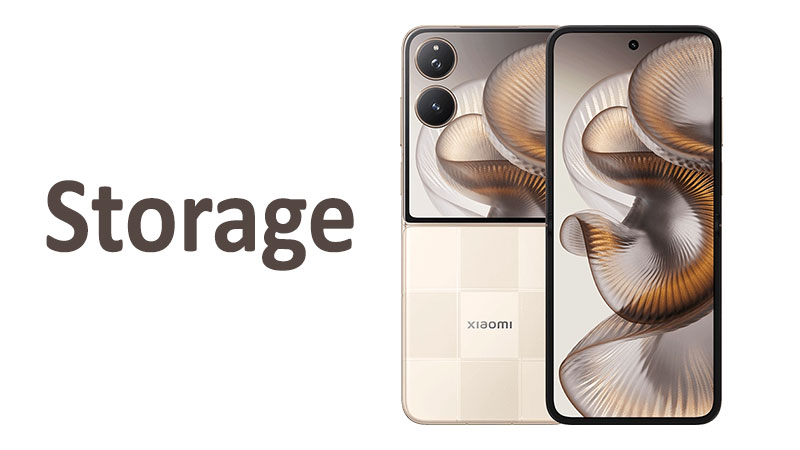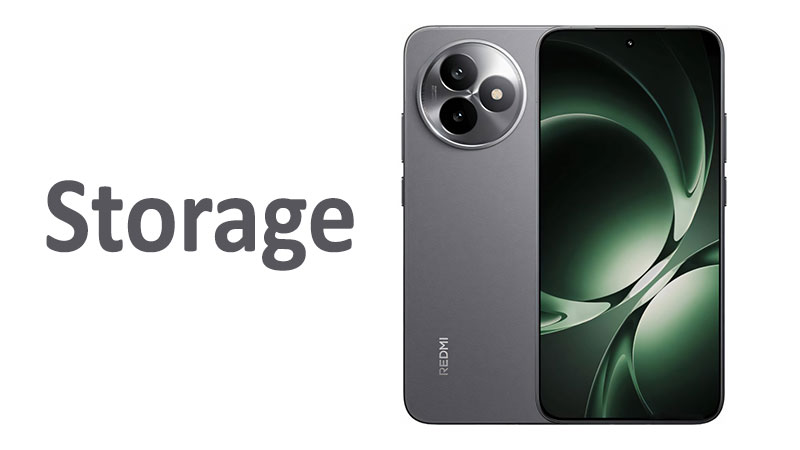The modern smartphone is a powerhouse of productivity and entertainment. Users expect to capture high-resolution photos and videos, run demanding applications, and store vast libraries of media. In this context, a device’s storage is not just a feature; it is a fundamental pillar of its performance and user experience. The Google Pixel 10 Pro Fold, a flagship foldable device, aims to meet these high demands with its impressive Google Pixel 10 Pro Fold storage specifications. This comprehensive article will explore every aspect of its storage, from capacity options to the underlying technology, helping you understand its importance and how it stacks up against the competition.
Storage Options: Capacity and Configuration
The Google Pixel 10 Pro Fold offers a range of generous storage capacities to suit different user needs. These options are a significant part of the device’s value proposition. They give consumers the flexibility to choose a model that aligns with their usage habits and budget.
The available storage configurations are:
- 256GB
- 512GB
- 1TB
This tiered approach is a welcome move from Google. The 256GB base model is a solid starting point for most users. It provides ample space for apps, photos, and general files. However, for power users, content creators, and those who plan to use the device for high-resolution video recording and large file transfers, the larger 512GB and 1TB options are crucial.
No Card Slot: The Pros and Cons of Non-Expandable Storage
One key characteristic of the Google Pixel 10 Pro Fold is the absence of a microSD card slot. This is a common trend among flagship smartphones, especially foldables. While this might be a drawback for some, it is a deliberate design choice with both advantages and disadvantages.
Pros of No Card Slot:
- Enhanced Performance and Reliability: Internal storage technology, like UFS 4.0, offers superior speeds and stability compared to external memory cards. The integrated storage is optimized to work seamlessly with the device’s operating system and processor, reducing potential bottlenecks.
- Sleeker Design and Durability: The removal of the card slot helps in achieving a more streamlined and durable body. This is particularly important for a foldable phone, where every millimeter of space and structural integrity is critical. The design is cleaner and reduces potential points of entry for dust and water, contributing to the device’s IP68 rating.
Cons of No Card Slot:
- No Expandability: Once you purchase a specific storage variant, that is the maximum capacity you will ever have. You cannot add more storage later if your needs change. This makes the initial buying decision very important.
- Higher Upfront Cost: Users who need more storage must pay a premium for a higher-capacity model from the outset. This can be more expensive than purchasing a smaller-capacity phone and a cheap microSD card.
For the Google Pixel 10 Pro Fold, the lack of a card slot emphasizes the importance of choosing the right storage size from the beginning. Google’s strategy is to offer large enough internal storage options that an expansion slot is not necessary for the vast majority of users.
The Power of UFS 4.0: Understanding the Technology
The Google Pixel 10 Pro Fold uses UFS 4.0 for its internal storage. UFS stands for Universal Flash Storage. It is a modern standard for flash memory in mobile devices. This technology is a significant upgrade from previous generations and a key selling point for the new Pixel.
UFS 4.0 provides a major leap in performance and efficiency. It boasts incredible read and write speeds. This translates directly to a faster, more responsive user experience. Apps load instantly, large files transfer in seconds, and high-resolution video recording is seamless.
UFS 4.0 Performance: A Detailed Look
The performance of UFS 4.0 on the Pixel 10 Pro Fold is a game-changer. It offers up to double the transfer speeds of its predecessor, UFS 3.1, which was found in the Pixel 9 series. This is not just a technical detail; it has tangible benefits for the user.
- App and Game Loading: Games and resource-intensive applications will open and load much faster. This reduces wait times and enhances the overall feel of the device.
- File Transfers: Moving large files, such as 4K and 8K video clips, between the phone and a computer is significantly quicker.
- Multitasking: The faster storage speed supports the device’s 16GB of RAM, allowing for smoother multitasking and app switching.
- Camera Performance: High-resolution video recording, especially at high frame rates, generates a massive amount of data. The high write speeds of UFS 4.0 prevent dropped frames and ensure a smooth recording process.
The UFS 4.0 technology is also more power-efficient. This means it consumes less energy for the same tasks. This contributes to the device’s overall battery life, a crucial factor for a phone with two power-hungry displays.
Specialized Comparisons: Pixel 10 Pro Fold vs. the Competition
When we look at the competition, the Google Pixel 10 Pro Fold’s storage technology stands out. While previous Pixel models were a bit behind in this area, the Pixel 10 Pro Fold puts Google on equal footing with the fastest Android devices on the market.
Pixel 10 Pro Fold (UFS 4.0) vs. Pixel 9 Pro Fold (UFS 3.1): The upgrade from UFS 3.1 to UFS 4.0 is a night-and-day difference in performance. While the Pixel 9 Pro Fold was a capable device, the 10 Pro Fold feels noticeably snappier and more efficient, especially under heavy workloads.
Pixel 10 Pro Fold (UFS 4.0) vs. Samsung Galaxy Z Fold 7 (Snapdragon 8 Elite for Galaxy): The Samsung Galaxy Z Fold 7 also uses UFS 4.0 storage. This means both devices are on a level playing field in terms of raw storage speed. The choice between the two will come down to other features, such as the processor, camera system, and software experience. However, Google’s inclusion of UFS 4.0 in the Pixel 10 Pro Fold ensures it is a serious competitor in the high-end foldable market.
Pros and Cons Summary
Pros:
- Multiple Storage Options: Users can choose from 256GB, 512GB, or 1TB. This provides flexibility for different budgets and use cases.
- Blazing Fast UFS 4.0 Storage: This technology offers significant speed improvements and better power efficiency, leading to a much more responsive user experience.
- Enhanced Performance: The fast storage complements the Tensor G5 chip and 16GB of RAM, making the device a true powerhouse for demanding tasks.
Cons:
- No Expandable Storage: The lack of a microSD card slot means you are locked into the storage size you purchase.
- Initial Cost: Choosing a larger storage variant comes with a higher upfront price.
Important Points for the Buyer
- Assess Your Needs: Before buying, think carefully about how much storage you will need. If you are a casual user who stores most files in the cloud, 256GB might be enough. If you are a mobile photographer or a video editor, the 512GB or 1TB model is a better long-term investment.
- Understand UFS 4.0: The speed of UFS 4.0 is a major benefit. Do not underestimate its impact on daily performance. This is a significant improvement over older devices.
- Cloud Storage as an Alternative: While there is no physical card slot, Google offers excellent cloud storage solutions. A Google One subscription can provide a seamless way to offload photos and files, freeing up your device’s internal storage.
Conclusion
The Google Pixel 10 Pro Fold storage is a standout feature that solidifies its position as a top-tier foldable device. With a choice of 256GB, 512GB, and 1TB capacities, it caters to a wide range of users, from the everyday consumer to the professional creator. The use of UFS 4.0 technology is a critical upgrade, providing a substantial boost in performance and efficiency that is noticeable in everyday use.
While the lack of a microSD card slot might be a concern for some, it is a trade-off for the device’s superior speed, durability, and seamless design. The Pixel 10 Pro Fold’s storage capabilities are comprehensive and well-thought-out, providing ample space and lightning-fast speeds for all your needs. For anyone considering this phone, the storage options are a major reason to choose it over its rivals.
FAQ
Does the Google Pixel 10 Pro Fold have a microSD card slot?
No, the Google Pixel 10 Pro Fold does not have a microSD card slot. It relies entirely on its internal UFS 4.0 storage.
What storage options are available for the Pixel 10 Pro Fold?
The phone is available in three storage configurations: 256GB, 512GB, and 1TB.
Is 256GB enough storage for the Pixel 10 Pro Fold?
For most users who primarily use cloud services for photos and backups, 256GB is sufficient. However, for power users who handle large files or high-resolution media, the 512GB or 1TB models are highly recommended.
What is UFS 4.0 storage?
UFS 4.0 is the latest standard for Universal Flash Storage in mobile devices. It offers significantly faster read and write speeds and better power efficiency compared to older standards like UFS 3.1.
How does UFS 4.0 benefit a foldable phone?
UFS 4.0 improves overall performance by speeding up app loading, file transfers, and multitasking. It also enhances the camera experience by allowing for seamless recording of high-resolution video without performance issues.


